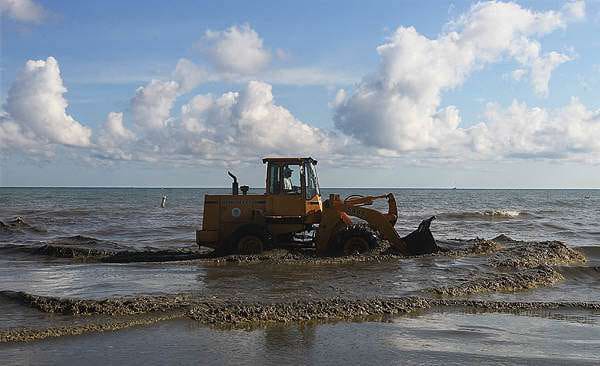Measuring the impact of fouled waters on people
This is the first part of the four part series, quantifying the impact of Harmful Algae Blooms (HABs) and nuisance algae on lakeside communities and people living and visiting the Great Lakes. Part one deals with loss, as well as the challenges of capturing the true damage foul water has on people. We’ll also review the need to better measure and articulate the significant and diverse benefits the Great Lakes watershed provides to human well-being.
Nearly every article on Harmful Algal Blooms (HABs) and nuisance algae starts the same way; with a description of the negative experience of encountering the stinking, day-ruining green invasion. It looks bad, it smells bad, and the impact on people is generally described as annoying.
The very deep and long term socio-economic impacts HABs and nuisance algae have on individuals, communities, professions, and cultures aren’t well-studied or reported on. But water is life. So, to encourage sound decision-making and smart calls to action, it’s important to fill information gaps and clearly measure and describe the profound effects fouled water has on us.

Counting our losses
The multitude of things that we love and need from our lakes, rivers, and streams is sometimes referred to as ecosystem services; in other words, what nature provides. However, it can get a bit clunky when we try to describe how the Great Lakes benefit our well-being. Spiritual enrichment, personal and shared identity, connection, cognitive development, reflection, physical health, recreation, and one-of-a-kind aesthetic experiences are all things that can easily be dismissed as non-essential, or replaceable, because we can’t quite express what clean, healthy waterbodies give us. Similarly, we have a hard time explaining why we can’t find these wonderful gifts anywhere else.
The non-material benefits people obtain from freshwater ecosystems like the Great Lakes are often dismissed as a luxury, recreation, a weekend plan. A sunset swim, paddles in the water, a waterfront stroll, the sound of a gull, sand in the bed. Somehow that can come across as cheesy.

HABs, nuisance algae, and our well-being
HABS and Cladophora aren’t just annoying and smelly. Come summer, they cause widespread damage in the Great Lakes watershed, on both sides of the border. Cladophora mats start to wash up on Great Lakes coastal and watershed shores, sometimes ankle and knee deep.

While the health impacts of Cladophora aren’t as severe as HABs, they can carry harmful bacteria. The sheer biomass of nuisance algae paired with its famous sewage smell turn people away from the lakes’ coasts and other waterbodies in the watershed. Cladophora is a particular nuisance on the north shore of Lake Erie’s eastern basin. The algae is also problematic in much of Lake Ontario, and in portions of Lake Huron. It’s increasingly becoming an extreme nuisance in Lake Michigan.
Blooms of cyanobacteria (blue-green algae) take over swimming and recreation zones, commercial zones, and drinking water facilities. Blue-green algae blooms can have severe impacts on our health, and when toxins are present they can be lethal to humans, pets, and wildlife. HABs are most concentrated in Lake Erie, but Lake Ontario is also regularly experiencing blooms, as are other lakes in the watershed.
HABs and Cladophora can make our waters unusable, untouchable, unsafe.
The cost of the loss
When people are deprived of access to their water, even temporarily, the outfall list is long: grief, loss of cultural touchstones, loss of traditional foods and harvesting practices, loss of the extensive mental and physical health benefits of being on and by the water, the loss of sacred spaces and gathering places for family and friends.
It’s not uncommon for individuals and communities to respond to long term fouled water by withdrawing from the lakes. People turn away or avoid them. Even after some waters recover, long term or temporarily, people look at the lakes differently. Feelings range from apprehension and lack of trust, to disgust and great sadness.
Why is it important to count our losses?
The expression “counting your losses” means to come to terms with a bad situation in order to cut your losses and move on. But we can’t move on from the water. We need to take good stock of the impact fouled water in the Great Lakes has on us. We also need to better articulate the devastation that goes far beyond a ruined beach day. Because just like funding and scientific data, our special relationship to water is significant fuel for this fight.
The good news is that more research is emerging from government, research bodies, and directly from communities which better quantifies and articulates the true value these places hold for individuals, cultures, and communities. That is what we’ll explore in the coming weeks.
This series will examine the impact of fouled water in the Great Lakes on our well-being, identity, and economies and professions.
Next up in the series
- What will you do for work? How HABs and nuisance algae impact professions and industries
- Identity, well-being, and water
- Turning pain into gain: what you can do to help
